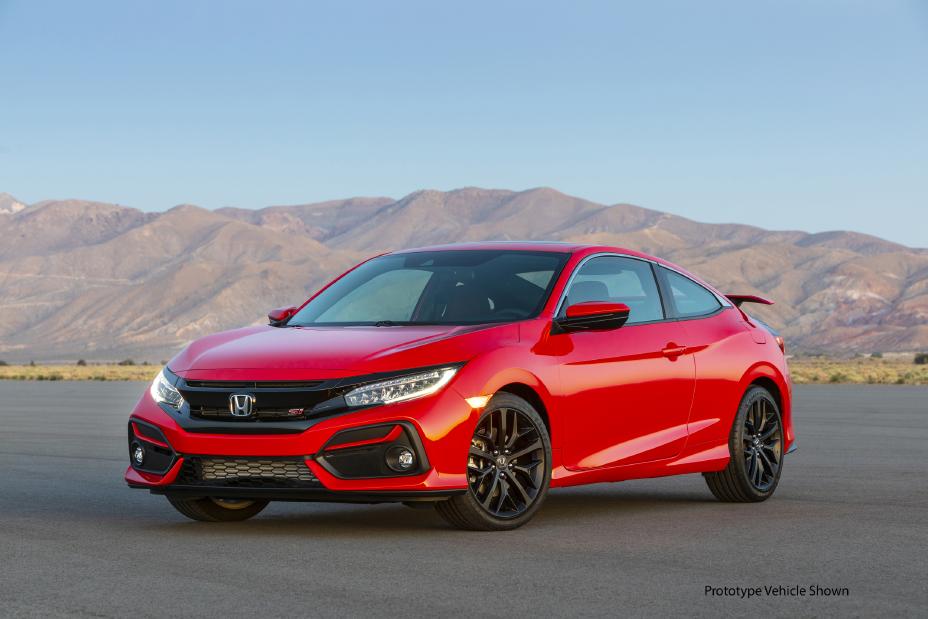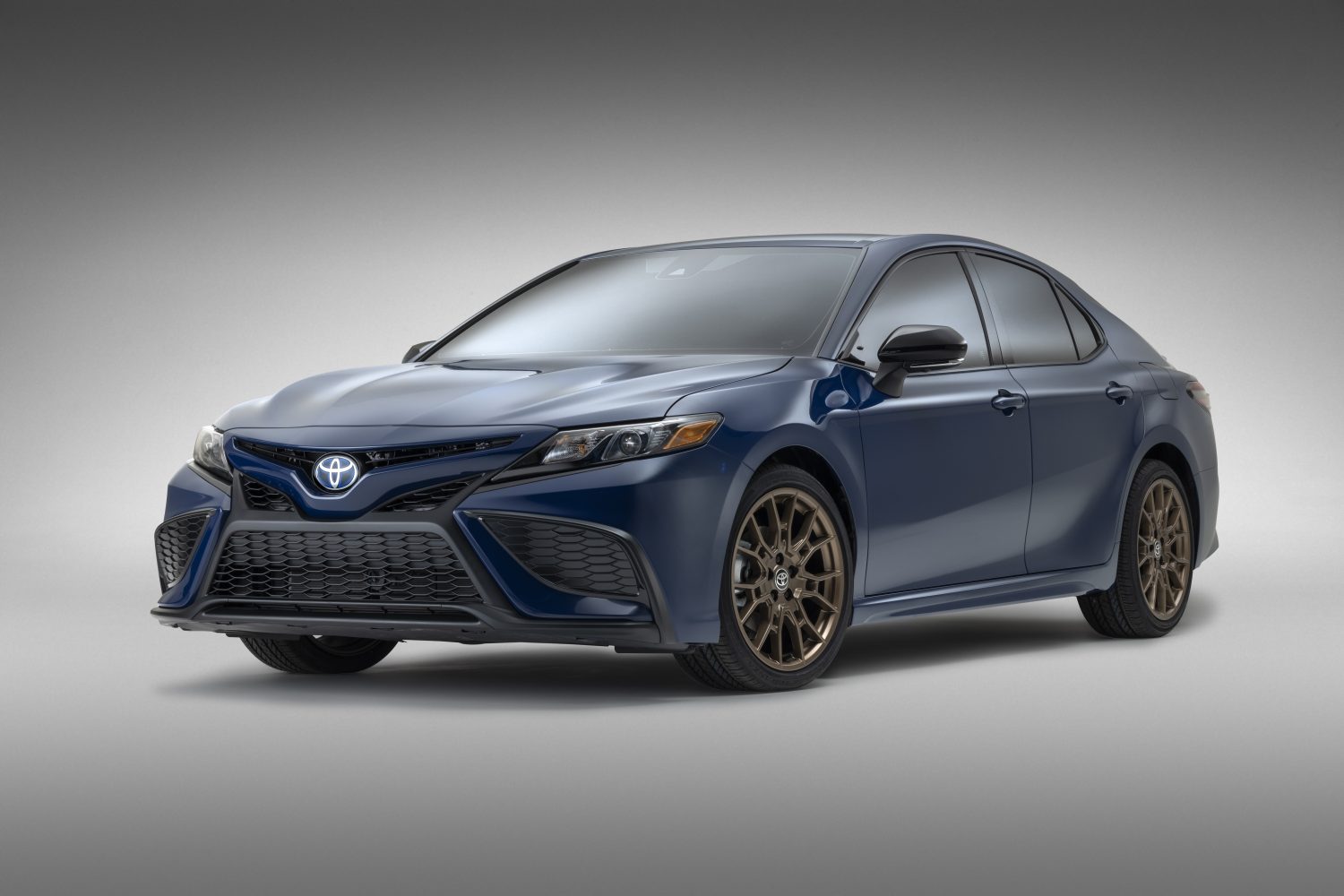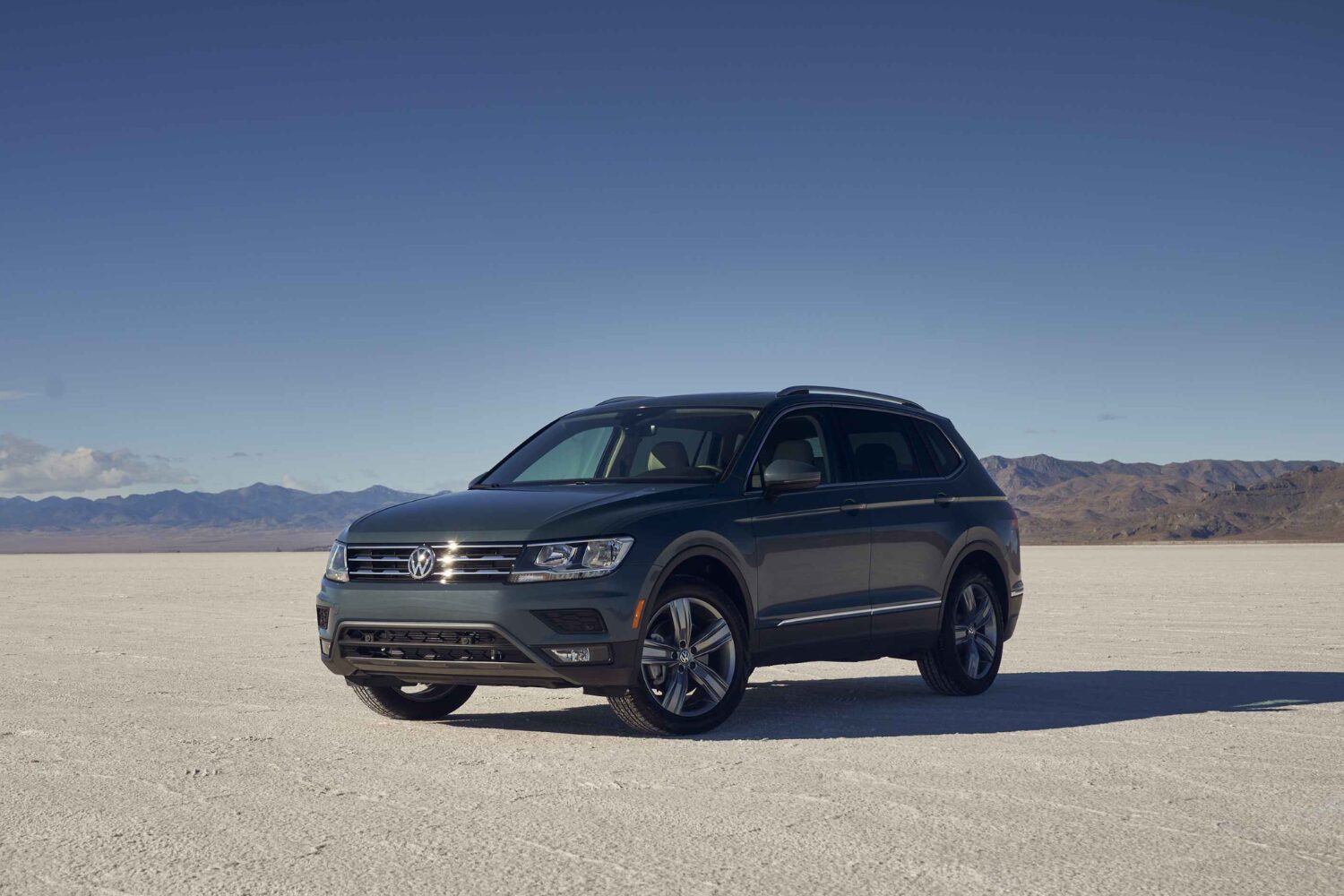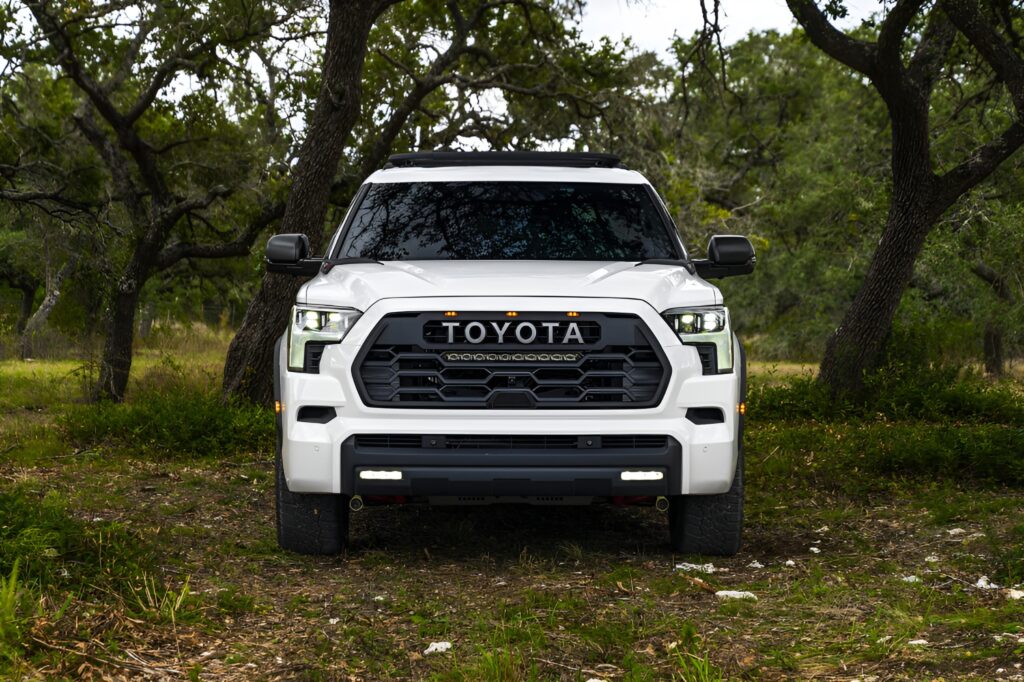
Price: $59,895- $78,495
7.5 /10
Rating
Pros
- Strong towing capacity.
- Advanced safety features.
- Spacious, high-quality interior.
Cons
- Cramped third-row seats.
- Limited cargo space.
- Unrefined hybrid transitions.
Overview: 2023 Toyota Sequoia Platinum
The 2023 Toyota Sequoia Platinum marks a significant leap forward for this full-size, three-row SUV, leaving behind its outdated, second generation Sequoia that lingered for over a decade. Built on the robust platform of the Tundra pickup truck, the new generation Sequoia introduces the iForce MAX hybrid powertrain, combining a 3.4-liter V-6 engine with an electric motor to produce an impressive 437 horsepower. Inside, the three-row cabin comfortably seats eight passengers and features a large touchscreen equipped with the latest software, a welcome upgrade from its predecessor. However, while this modernization helps the Sequoia compete with the Chevy Tahoe and Ford Expedition, Toyota’s limited interior space and cargo capacity slightly affect its practicality. From my experience testing similar vehicles, the powertrain’s performance is a standout, but the compromises in utility might give pause to those prioritizing space over tech.
What's New in the 2023 Toyota Sequoia?
Toyota’s 2023 Sequoia steps out from its predecessor’s shadow with redesigned Tundra underpinnings, a move that sharpens its look and refines how it rides—though it’s no Land Cruiser replacement. Borrowing tech DNA from the Lexus LX600, the new Sequoia debuts a hybrid powertrain, available across trims, and packs features like a configurable dash and inside cabin materials that finally rival premium rivals. Having driven both the Sequoia and its platform-mate Tundra, I’ll say this: the shared chassis delivers truck-like capability, but Toyota’s tuning prioritizes comfort over ruggedness, a strategic pivot. While the Land Cruiser’s hiatus left a gap, the 2023 Sequoia fills it with modern tech and family-friendly space—even if its pricing edges closer to the Lexus LX600.
Pricing, Trim Levels, and Best Choice
With a starting price of $59,895, the 2023 Toyota Sequoia lineup extends up to $78,495, depending on trim and options. The Limited model stands out as the best value, positioned one-step up from the base SR5 while packing additional premium items as standard. It features a larger 14.0-inch touchscreen, a power liftgate, heated-and-cooled front seats, and power-folding third row seating, making it a compelling choice. The 20-inch wheels further enhance its stance, blending practicality with premium appeal. From my experience testing similar SUVs, Toyota strikes a balance between rugged capability and upscale refinement, ensuring the Sequoia remains competitive in this segment.
$59,895
$66,295
$72,495
$76,895
$78,495
Powertrain, Transmission, and Driving Dynamics
Toyota’s 2023 Sequoia redefines large SUV expectations with its iForce MAX hybrid powertrain—a 3.4-liter twin-turbo V-6 engine paired with an electric motor—delivering 437 hp and a crushing 583 pound-feet of torque. Mated to a 10-speed automatic transmission, this setup offers rear-wheel drive or four-wheel-drive configurations, with the TRD Pro off-road-oriented model boasting upgraded Fox dampers, a front skid plate, locking rear differential, and forged 18-inch wheels wrapped in 33-inch tires. During my test drive, the Capstone trim accelerated to 60 mph in 5.6 seconds and cleared the quarter-mile in 14.3 seconds at 94 mph, making it quicker than the GMC Yukon Denali but slower versus the Ford Expedition Timberline’s off-road grit. On-road, the comfortable ride and quiet cabin mask its size, though steering effort feels oddly featherweight, leading to twitchy driving behavior in extra-wide lane transitions—a quirk noted during initial test track runs. While off-road equipment shines, the Sequoia’s on-road dynamics borrow heavily from its pickup sibling, the Tundra, with shared wheels and versions that carry over engineering DNA. Test results confirm: this SUV isn’t just updated—it’s reengineered for dominance.
Fuel Efficiency and Driving Range
Toyota’s hybrid gamble pays off—partially. The Sequoia’s EPA-rated 22 mpg combined (21 city/24 highway) for rear-wheel-drive models edges past gas-only rivals, but opt for four-wheel drive, and numbers drop to 20 mpg combined (19 city/22 highway). During my real-world test—a 75-mph highway loop—the setup returned 21 mpg, mirroring its EPA claims, though urban stops dragged it closer to 18. Compared to the outgoing model’s thirsty 14 mpg combined, this is a clear improvement—but it still falls short of true hybrid efficiency. The fuel economy trade-off? Heftier weight from the hybrid system, which dulls acceleration slightly. For deeper information, visit Toyota’s website—but here’s the raw truth: while the Sequoia’s numbers impress for a four-wheel-drive bruiser, they’re still a far cry from unibody hybrids.
Towing and Off-Road Capability
Hauling heavy loads requires serious strength, and few three-row family SUVs handle the challenge like this one. Built on a full-size pickup truck platform, it delivers a maximum capacity of 9,520 pounds, easily beating the Ford Expedition, Tahoe, and Suburban twins, though it falls short of the Wagoneer’s 10,000-pound limit. But towing isn’t just about a big number—this SUV ensures control, stability, and durability, making it complete for road trips, off-road adventures, or heavy-duty tasks. With a balance of power and precision, the Sequoia’s engineering proves that strength isn’t just about raw capacity but how well it supports drivers in real-world conditions.
Premium Interior and Comfort
Toyota’s new generation Sequoia climbs the price ladder with a large interior swathed in premium leather upholstery, wood accents, and chrome trim—but don’t confuse opulence with utility. Seats are heated and cooled up front, while second-row captain’s chairs (available on higher trim levels) or a bench setup cater to eight-passenger flexibility. The third row, though accommodating for adults, forces a limited 12 cubic feet of capacity behind it; fold all rear rows, and a flat load floor unlocks 86 cubic feet. My week with the Platinum trim revealed flaws: the panoramic sunroof eats into headroom, and cloth upholstery? Only on base models. Features like a 14-speaker stereo system and folding equipment for cargo management impress, but rivals outpace Toyota in intuitive storage. For all its standard rear seat luxuries, the Sequoia’s optional compromises—like tight legroom when using the third row—remind you this bruiser prioritizes style over family-first pragmatism.

Cargo Space and Practicality
The Sequoia is built to accommodate both everyday storing needs and the demands of pulling a big trailer, making it a solid choice for those with overpacking habits. While the center console and interior storage spaces may not be as organized as some rivals like the Suburban, it still offers large pockets, cupholders, and dedicated spots for smartphones, laptops, water bottles, and other personal items. The new adjustable-height system allows owners to configure the cargo space for various needs, providing up to 22.3 cubic feet of storage behind the third row—slightly less than the Tahoe but a few more cubes than the Expedition. Maximum cargo space is underwhelming by large SUV standards, with 86.9 cubic feet available when the second and third seating rows are lowered—a notable comparison to the Tahoe’s 122.9 cubic feet.
Infotainment, Connectivity, and Smart Tech
The redesigned cabin comes with a large 14.0-inch touchscreen, an upgrade that Toyota’s engineers smartly swapped out from the old, dated system, ensuring all trims, even the base SR5, benefit from a modern infotainment setup; I’ve found its smooth interface effortless to use, especially for seamless connectivity, as it offers various advanced options, including smartphone mirroring, music-streaming, and a reliable Wi-Fi hotspot, which enhances every drive by keeping passengers connected in any environment; the system has been fine-tuned with improved software updates that ensure lag-free operation, while a layout inspired by the Tundra maximizes convenience without overcomplicating controls; I appreciate the intuitive design, which places everything within reach, making it easier than ever to manage all entertainment and navigation features on the go, creating a balanced manner of accessibility that suits both tech-savvy users and those preferring simplicity but without compromising innovation.
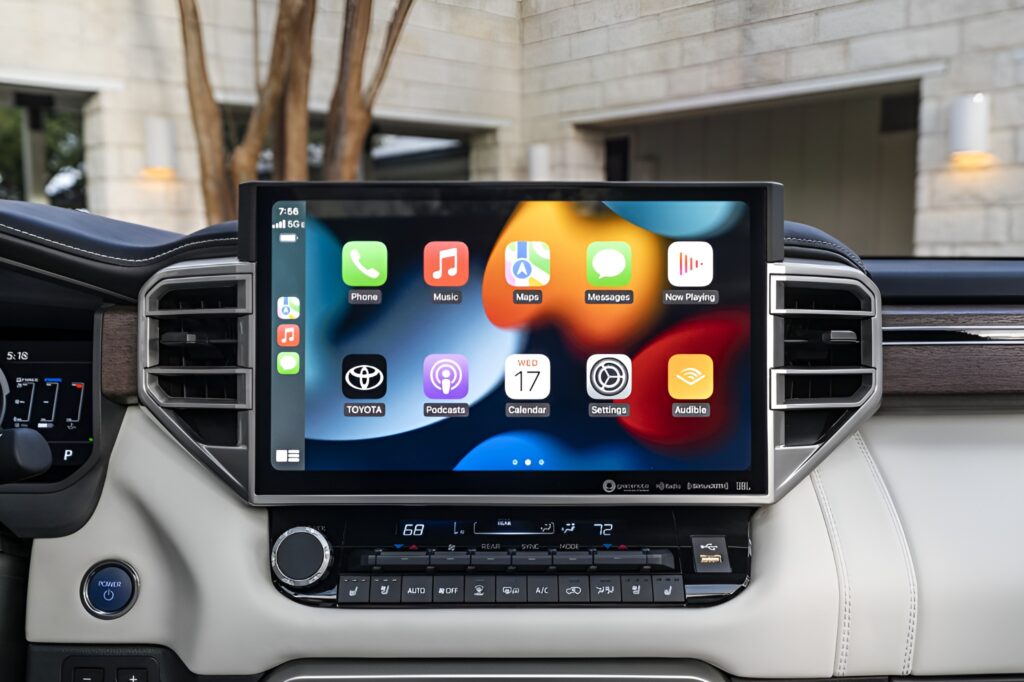
Safety and Driving Support
Sequoia’s advanced safety technology ensures a secure drive with available driver-assistance systems that come standard across the board, providing confidence on every journey. For more details on safety ratings, visit the National Highway Traffic Safety Administration (NHTSA) and Insurance Institute Highway Safety (IIHS) websites, where Sequoia’s crash-test results are available.



Toyota’s Warranty and Maintenance Plan
Toyota’s reputation for reliability is backed by strong protection, as both the limited and powertrain warranties are similar to many full-size-SUV competitors’, ensuring long-term confidence for owners. What sets it apart is Toyota’s commitment to value, offering complimentary scheduled maintenance as a nice bonus, reducing upkeep costs. The limited warranty covers three years or 36,000 miles, while the powertrain warranty extends to five years or 60,000 miles, guaranteeing durability. Hybrid models receive extended coverage, with components covered for ten years or 150,000 miles, making it a great option for those planning long-term ownership. Additionally, complimentary scheduled maintenance is covered for two years or 25,000 miles, adding even more value to the overall package.



6.3 / 10
9.6 / 10
8.5 / 10
7.0 / 10
7.5 /10
Rating


